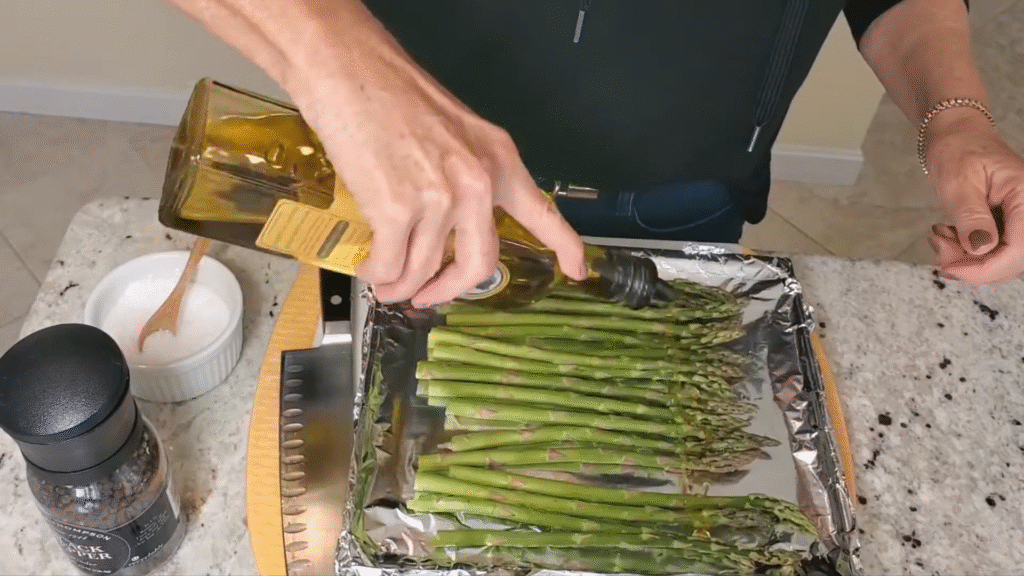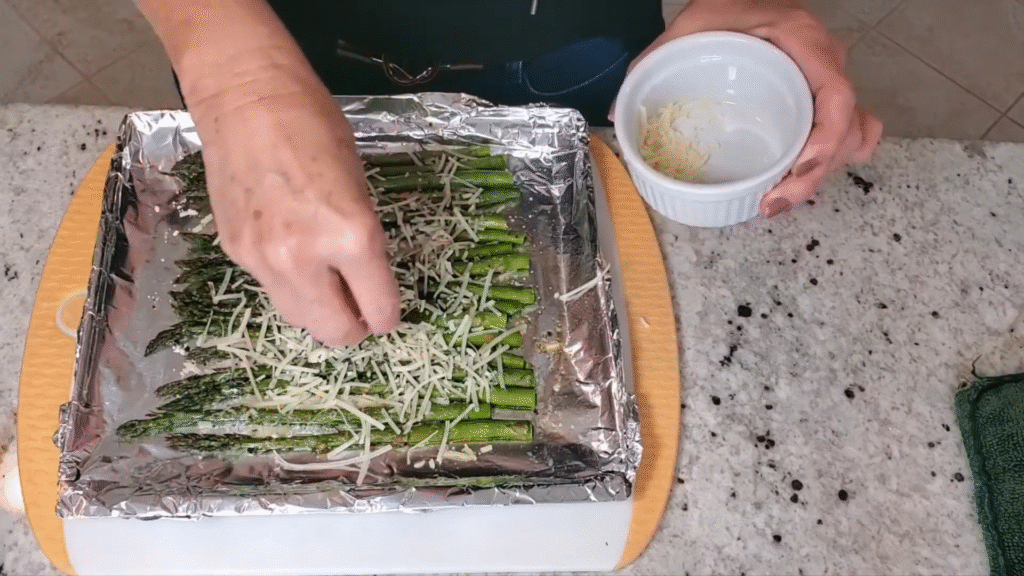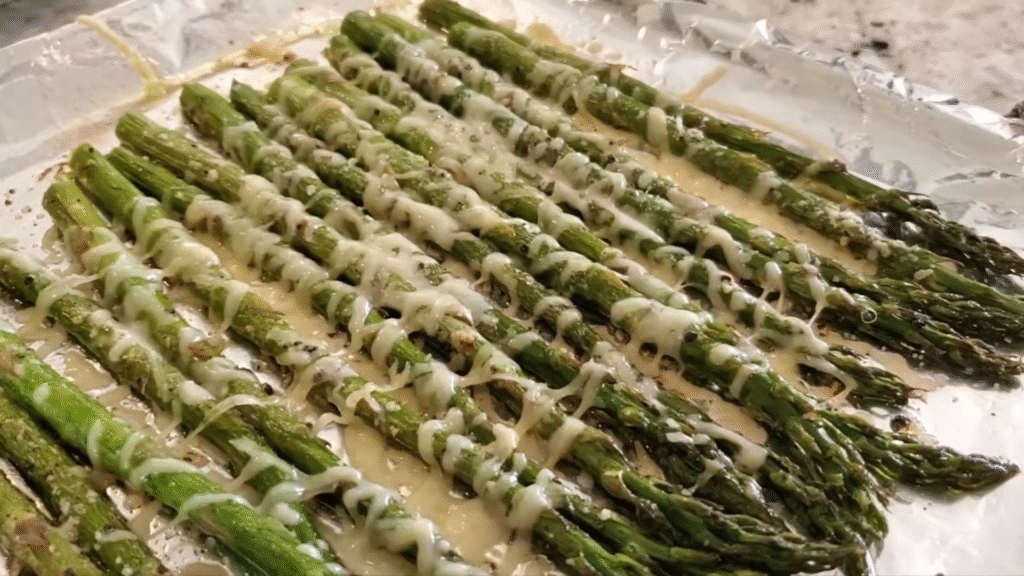If you’re like me, you probably look at asparagus at the store and think, “What do I even do with this?” That was me too.
Then one day, I roasted it in the oven, sprinkled some Parmesan on top, and wow… it turned out crispy, cheesy, and so delicious.
Now, this is the only way I want to eat asparagus, and I promise you’ll feel the same once you try it. Let’s get into it.
Why Roast Asparagus Instead of Steaming or Boiling?

Boiled asparagus? Too soggy. Steamed? Sometimes bland. But when you roast asparagus in the oven, something amazing happens.
The heat makes the tips crispy, the stalks tender, and when you throw Parmesan cheese on top, it melts into a golden crust. You get flavor, crunch, and that cheesy kick all in one bite.
Ingredients You Need

You don’t need a lot. That’s the beauty of this recipe. Here’s what I use:
- 1 bunch of fresh asparagus
- 2–3 tablespoons olive oil
- 2 cloves garlic, minced (optional but I love it)
- Salt and black pepper to taste
- 1/4 cup grated Parmesan cheese
That’s it. Simple and easy.
How to Prepare Asparagus

Asparagus is pretty easy to handle, but here’s the trick:
- Wash it well.
- Snap off the tough ends (they naturally break where they should).
- Pat them dry so they roast better.
A quick prep and you’re ready to roast.
Step-By-Step: Oven Roasted Asparagus With Parmesan
Here’s exactly what I do every single time:
- Preheat oven to 400°F (200°C).
- Lay asparagus in a single layer on a baking sheet.
- Drizzle olive oil all over. Toss gently so every stalk is coated.
- Season with salt, pepper, and garlic (if using).
- Sprinkle Parmesan generously on top.
- Roast for 12–15 minutes until tender and slightly crispy at the tips.
That’s it. Six easy steps and you have the most delicious asparagus you’ve ever had.
Tips for the Best Results

- Don’t overcrowd the pan. Spread them out so they roast, not steam.
- Use fresh Parmesan, not the powdery stuff. Trust me, it makes a difference.
- If you like extra crispy tips, leave them in the oven for 1–2 minutes longer.
What to Serve With Roasted Asparagus
This dish goes with almost anything. I’ve had it with:
- Grilled chicken
- Steak
- Salmon
- Or even just as a snack (yes, I’ve eaten asparagus like fries before).
It’s that good.
FAQs About Oven Roasted Asparagus With Parmesan
Q: Can I use frozen asparagus?
A: Fresh is best, but if you only have frozen, thaw it first and dry it really well before roasting.
Q: Can I add other cheese?
A: Yes! Try mozzarella or cheddar, but Parmesan gives the best crispy texture.
Q: How do I know when it’s done?
A: The stalks should be tender but not mushy, and the tips should look slightly crispy.
Q: Can I make it ahead of time?
A: It tastes best fresh, but you can reheat in the oven at 350°F for 5 minutes to bring back the crisp.
That’s my go-to recipe for crispy, cheesy oven roasted asparagus. Once you try it, I don’t think you’ll ever want to cook asparagus another way.
